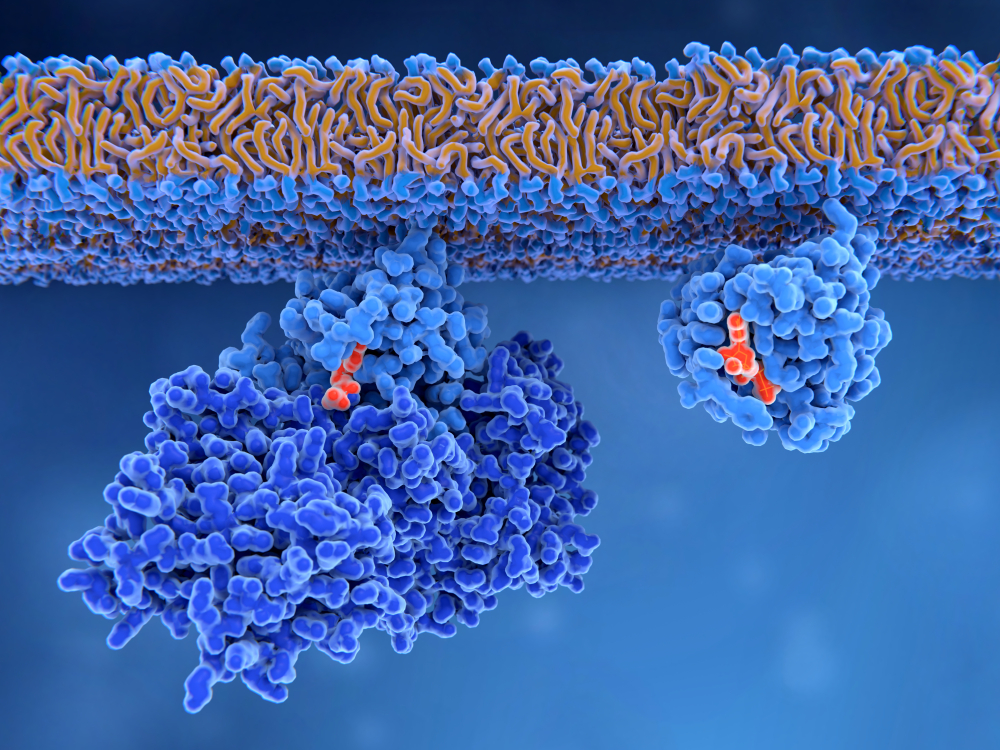

NMR Elucidates Evolutionary Change In Protein Interactions
“Our results demonstrate how protein-protein complexes involving intrinsically disordered domains can achieve stronger binding via an intricate interplay between structural and dynamical rearrangements that cannot easily be predicted”
Protein–protein interactions are high-specificity contacts between two or more protein molecules achieved by electrostatic forces. They are critical to cell structure and function, and control virtually all vital cellular processes, including gene expression, proliferation, intracellular communication and apoptosis. For this reason, they are popular targets in the development of new therapeutic agents.
Indeed, protein-protein interactions have been thoroughly studied to further understanding of how the body functions in healthy and diseased states.
Protein–protein interactions show a high degree of precision, which suggests that a pathway of evolutionary change must have occurred to achieve protein-protein interactions that are optimised for their desired structural or functional purpose. It is likely that the protein-protein interactions seen today have evolved over tens or hundreds of millions of years.
A new protein-protein interaction may arise by chance as a result of a point mutation or gene duplication. The new interaction will have a different effect on the biochemistry of the cell, which will be either more or less beneficial than the original interaction. If it is less effective, it will not persist. However, if it proves to be advantageous, it will be retained by natural selection.
Although this evolutionary process will almost certainly have taken place, very little is known about it. It is known that the affinity of the protein-protein interaction between the interaction domain (CID) of the intrinsically disordered CREBBP (CREB-binding protein) and the nuclear coactivator binding domain (NCBD) of NCOA (nuclear receptor coactivator) and CREBBP/p300, were much lower and associated with greater conformational heterogeneity in species present around 600 million years ago compared with those in use today.
The nature of this evolutionary change in protein-protein interactions has recently been explored by comparing three historical CID/NCBD complexes3. The structure of each of the complexes was obtained by nuclear magnetic resonance (NMR) using Bruker spectrometers (600, 700, and 900 MHz, 1H frequencies), equipped with triple-resonance cryogenic temperature probes at 298 K. The dynamics of the protein-protein interactions were then studied using relaxation dispersion NMR spectroscopy, further improvements expected from new UHF instruments.
The most ancient Cambrian-like CID/NCBD complex was found to lack some of the secondary structure apparent in the more recent forms of the complex. A reduction and reshuffling of the backbone dynamics was also apparent from the low-affinity ancestral complex to the more-recent Ordovician-Silurian and extant human complexes. The movement of the backbone was reduced in the Ordovician-Silurian CID/NCBD complex and further redistributed in the extant human CID/NCBD complex.
Advances in technology have thus enabled snapshots of the evolutionary change in protein-protein interactions of the CID/NCBD complex over 600 million years to be captured. These latest findings highlight how changes in structure and motion conspire to shape affinity during the evolution of a protein-protein interaction.
References
Jemth P, et al. Structure and dynamics conspire in the evolution of affinity between intrinsically disordered proteins. Science Advances 2018;24(Vol. 4):no. 10, eaau4130.
https://www.science.org/doi/10.1126/sciadv.aau4130


